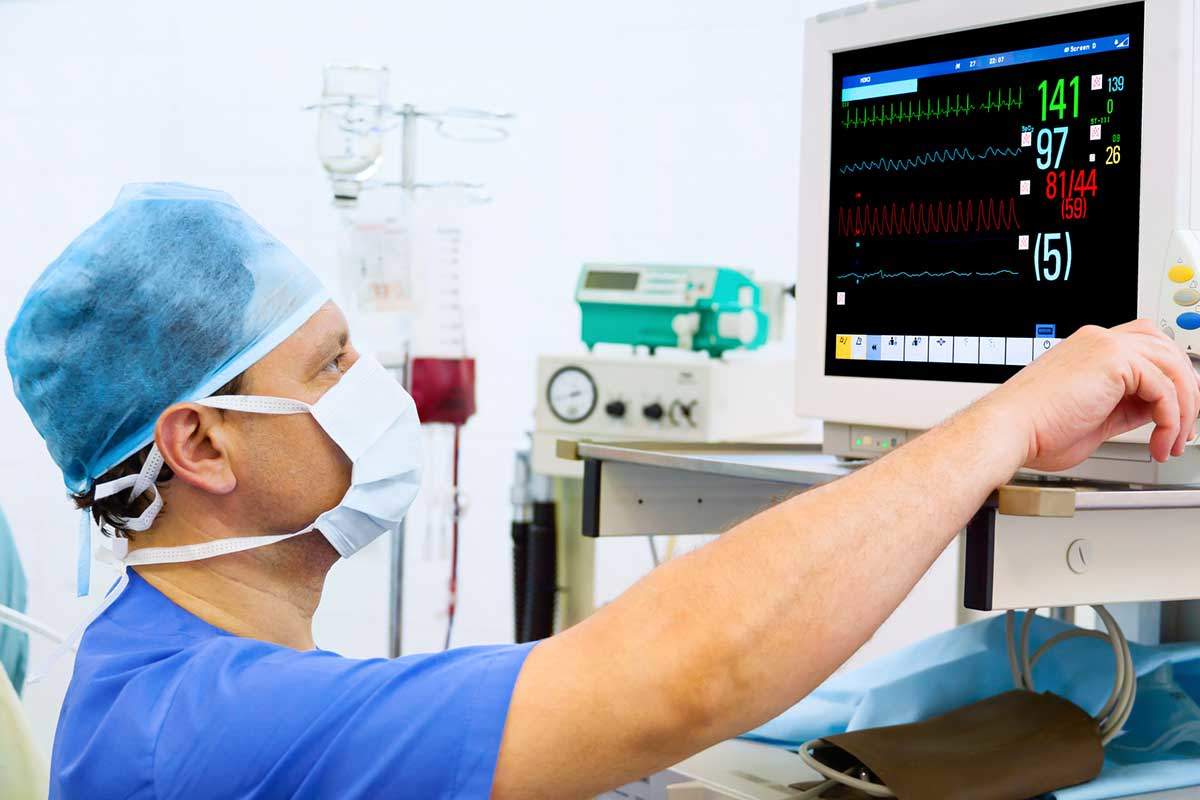
[rt_quote name="" position="" link="" link_title="" id="" class=""]Pain-free surgery[/rt_quote]
Pain-free surgery.
Anesthetic procedures allow to perform surgery without pain in a state of unconsciousness (general anesthesia), or widely awake (local or locoregional anesthesia).
The choice of a certain kind of anesthesia depends on the type of surgery and the opinion of the anesthetist during preoperative consultation when you state of health will be carefully evaluated.
General Anaesthesia
During general anesthesia your body experience a conditions similar to very deep sleep, produced by the intravenous injection of drugs and/or by the inhaling of anesthetic gases. For safety and practical reasons it can be performed only in dedicated surgical theaters.
Risks and sequele of general anaesthetic
Advancement of techniques and drugs reduced the risk of complications or unpleasant experience like nausea or vomit. Nevertheless, each patient is instructed to observe strict fast few hours before surgery to avoid aspiration of food in the lungs. The introduction of a breathing tube into the trachea (intubation) or into the throat (laryngeal mask) to allow breathing during the anesthesia can cause a sore throats or temporary hoarseness. If you have dental prosthesis or pathology in your mouth tell you anesthetist to avoid broken teeth or any possible damage during intubation. There can be a painful red blotch around the vein into which the drugs have been injected but this usually resolves within a few days. When you lay down on the operating bed for few hours your body will be well padded because your muscle will be relaxed and you will not be able to move. Sometimes, a long operating time may cause minor compression in certain nerves, which can lead to numbness, or, in exceptional cases partial paralysis of an arm or a leg. In most cases, the numbness (paresthesia) resolves within a few days. Temporary amnesia or a decrease in the ability to concentrate can occur for a few hours after the anesthesia. Unforeseeable life-threatening complications such as a serious allergic reaction, heart failure, pulmonary embolus or asphyxia are extremely rare (occurring in 1:250000 people).
Locoregional Anesthesia
Locoregional anesthesia uses various techniques to ensure that only the part of your body in which the operation will be performed will be made painless. It works by blocking the nerves in this region after injecting a local anesthetic around them. During local anesthesia you are awake, able to speak with the team and you will not need to wait into the operation room after surgery but you will go back to your room or back home straight after.
Risks and complications of locoregional anesthesia
There may be transient headaches after an epidural anesthetic. Patients sometimes require few days rest or/and a specific local treatment e.g. pain patches. Temporary paralysis of the bladder may require the temporary fitting of a urinary catheter. There may be temporary itching when morphine or its derivatives are used. Very rarely we see a decrease in auditory or visual acuity. Depending on the combinations of drugs used, there may be temporary amnesia or a decrease in the ability to concentrate for a few hours after the anaesthesia. More serious complications such as convulsions, heart failure, permanent paralysis or varying loss of sensation are extremely rare. Only a few cases have been described, whereas hundreds of thousands of anaesthetic operations of this type are carried out every year.
Sedation
Sedation is a technique that blends the best of general and local anesthesia. It consists of injecting some intravenous relaxant to help you sleep while local anesthesia eliminates the pain with a smaller dose than with pure local anesthetic only. It is ideal when local anesthesia is not enough by itself, toxic if injected in big amounts or you just feel anxious and do not want to be conscious during operation.

